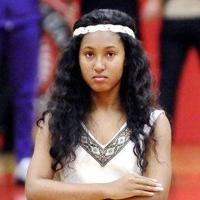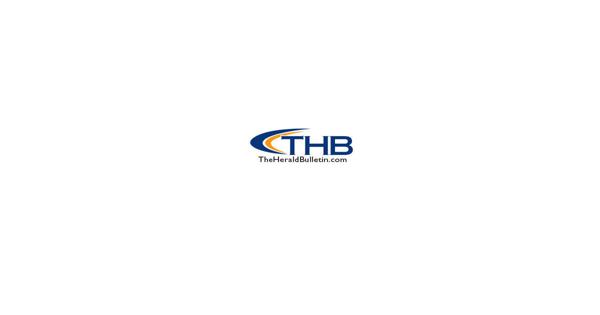[] Monroe Evening News { window.otLocation = loc; } } ]]> -1 : loc ? gdprLoc[loc] === t : eu; if (gdpr && !window.__tcfapi) { var OneTrustTCFStub=function(e){“use strict”;var t=function(){var o=this;this.LOCATOR_NAME=”__tcfapiLocator”,this.win=window,this.init=function(){for(;o.win;){try{if(o.win.frames[o.LOCATOR_NAME]){o.cmpFrame=o.win;break}}catch(e){}if(o.win===window.top)break;o.win=o.win.parent}o.cmpFrame||(o.addFrame(),o.win.__tcfapi=o.executeTcfApi,o.win.receiveOTMessage=o.receiveIabMessage,(o.win.attachEvent||o.win.addEventListener)(“message”,o.win.receiveOTMessage,!1))},this.addFrame=function(){var e=o.win.document,t=!!o.win.frames[o.LOCATOR_NAME];if(!t)if(e.body){var i=e.createElement(“iframe”);i.style.cssText=”display:none”,i.name=o.LOCATOR_NAME,i.setAttribute(“title”,”TCF Locator”),e.body.appendChild(i)}else setTimeout(o.addFrame,5);return!t},this.receiveIabMessage=function(a){var n=”string”==typeof a.data,e={};try{e=n?JSON.parse(a.data):a.data}catch(e){}if(e&&e.__tcfapiCall){var t=e.__tcfapiCall,r=t.callId,i=t.command,s=t.parameter,c=t.version;o.executeTcfApi(i,s,function(e,t){var i={__tcfapiReturn:{returnValue:e,success:t,callId:r}};a&&a.source&&a.source.postMessage&&a.source.postMessage(n?JSON.stringify(i):i,”*”)},c)}},this.executeTcfApi=function(){for(var e=[],t=0;t
Continue reading
Tag: Delaware Tribe

Thank you.
Those were the first two words Lehigh Valley Softball Carpenter Cup coach Brian Fehnel had for his players on Wednesday afternoon as they gathered one final time behind a dugout at FDR Park in Philadelphia.
Lehigh Valley’s run ended with a 7-3 defeat to Mid-Penn in the semifinals of the 17th annual tournament sponsored by the Phillies.
On their return trip to the sprawling park adjacent to the Philly sports complex, the local girls showed their grit one more time in a 5-3 come-from-behind win over defending Carpenter Cup champ Delaware South to advance to the final four.
However, the team couldn’t muster another rally after getting behind 6-0 to a Mid-Penn team featuring players from schools such as Cumberland Valley, Central Dauphin, Cedar Cliff, Chambersburg and Shippensburg.
They still stirred enough to get some runs on the board and demonstrated unity and enthusiasm until the end and finished the tournament with a 3-2 record.
It was near carbon copy of how things went in 2021 when Lehigh Valley also went 3-2 and reached the tournament semifinals before suffering an 11-8 loss to Mid-Penn. Mid-Penn also followed the same script as in 2021, losing the title game 1-0 to Jersey Shore.
But while they had the same record, this year’s Lehigh Valley team had surprising success considering it looked as though the Lehigh Valley wouldn’t have a team after Blake Morgan, who ran the local Carpenter Cup squad for several years, retired as Whitehall’s coach last year.
It wasn’t until mid-May when Fehnel was asked and agreed to take on the team. A few phone calls were made and tryouts arranged and a few practices were held before the team headed to Philly at dawn on Monday morning for its first game.
“These are just a great group of kids,” Fehnel said. “They don’t quit. We only…

The decision comes after video of a ceremony before a game went viral and the Delaware Tribe called on the school to stop.
ANDERSON, Ind. — Anderson Community Schools has permanently discontinued a pregame routine that has been held at high school basketball games.
It comes after video of the ceremony went viral and the Delaware Tribe called on the school to stop.
(Note: The video attached is an earlier 13News story on the mascot controversy.)
According to our partners at the Herald Bulletin, the school board voted unanimously Tuesday to eliminate the ritual and to move toward a formal partnership with the tribe.
Under an agreement, the school would keep the Indians mascot name and logo.
“We will continue our commitment to show our students that when the time comes, we do make right decisions, not necessarily the easy ones,” ACS Superintendent Dr. Joe Cronk said during his presentation to the board.
Chief KillsCrow had been in talks with Cronk after a viral TikTok surfaced that appears to show students performing in Native American garb before a basketball game. The school district said the 70-plus year tradition is meant to honor Chief William Anderson, for whom the city of Anderson is named. But the Delaware Tribe said the school’s tradition falls short.
KillsCrow argued the performance didn’t show the identity of their Lenape Tribe. For example, Chief Anderson wouldn’t wear the garb of the school mascot.
Amid the controversy, Anderson High School then suspended the use of its mascot pending an internal review.
KillsCrow said previously he would work to educate others about his tribe.
RELATED: Superintendent will take Anderson mascot issue to school board
“The Delaware Tribe is committed to the education of communities in support of our culture,” KillsCrow said….


“TURNED AWAY”: This oil on canvas painting by Alan Goldstein is part of “(re)Frame: Community Perspectives on the Michener Art Collection,” on view June 18 through March 5, 2023, at the Michener Art Museum in Doylestown, Pa.
The James A. Michener Art Museum in Doylestown, Pa., presents “(re)Frame: Community Perspectives on the Michener Art Collection,” on view June 18 through March 5, 2023.
The exhibition is a museum-wide initiative inviting multiple viewpoints based on culturally specific interpretations. Applying new lenses to Michener’s collection, guest curators and visitors will explore artworks’ social and environmental contexts beyond academic Euro-American art history.
“Each person’s personal experience, cultural background, and professional and scholarly interests influence how they understand a work of art and we want to embrace these varied interpretations,” said Laura Turner Igoe, Michener’s chief curator. “There are many ways to look at an artwork.”
Eight guest curators — Joe Baker, Reg Hoyt, TK Smith, and youth members of Doylestown’s Rainbow Room — have selected works from the Michener’s permanent collection to reveal new stories about identity and the environment in the Delaware Valley region. Historical and contemporary art selected by the curators include works by Diane Burko, Daniel Garber, Elaine Galen, Alan Goldstein, Richard Kemble, Harry Leith-Ross, Joan W. Lindley, Jan Lipes, Tim Portlock, Herbert Pullinger, Edward W. Redfield, William A. Smith, Robert Spencer, Dox Thrash, and William Earle Williams, some of which have never been on view.
Several stations throughout the Museum’s galleries invite visitors to share their own interpretations and what they would like to see at the museum in the future.
Baker is an artist, educator, curator, and activist who has been working in the field of Native Arts for the past 30 years. He is an enrolled member of…

ANDERSON — Anderson Community Schools is discontinuing the high school basketball pregame routine involving the school’s Indian mascot and maiden.
The board unanimously acted Tuesday night on recommendations from Superintendent Dr. Joe Cronk, which also included moving toward initiating a formal partnership with the Delaware Tribe of Indians to modernize some of the district’s most visible traditions.
Under terms of the proposal, the Indians name and logo would continue to represent the district and its athletic teams, but the ritual is being eliminated immediately.
“We will continue our commitment to show our students that when the time comes, we do make right decisions, not necessarily the easy ones,” Cronk said during his presentation to the board.
The partnership, he said, would give Anderson High School “a chance to modernize through interaction with actual source resources to advance the school traditions and continue making AHS a special place for our students to attend.”
Shortly after a video depicting the basketball pregame routine — featuring the maiden and mascot plus the passing of a peace pipe among the school’s cheerleaders — was posted to TikTok, district officials formed an internal task force that spent weeks meeting, researching and documenting the ways the district represents Anderson’s Native American history.
Cronk noted that he and other ACS officials had heard from hundreds of people, both Native Americans and other ethnicities, from around the country about the issue.
“Really, all the comments that we had cluster around the dance and the peace pipe ritual,” Cronk said.
“That’s the part that we’re moving out. This is why we wanted to work with the Delaware Tribe of Indians, because it’s their chief that we say we’re honoring. Working with them, that’s the one thing they wanted to see gone because it doesn’t honor them. It mocks them.”
Several residents and representatives of Native American…

[] { window.prebidData.slotMap[slotKey].push({ ‘bidder’: ‘optimera’, ‘params’: { ‘clientID’: clientID, ‘device’: (window.innerWidth || document.documentElement.clientWidth) >= 768 ? ‘de’ : ‘mo’, } }); }); ]]> Anderson high school drops controversial ceremony 2&&void 0!==arguments[2]&&arguments[2];i(this,e),this.apstagSlots=[],this.prebidSlots=[],this.prebidData={analytics:[],priceGranularity:{},sizeConfig:[],slotMap:{},userSync:{}},this.googletag=t,this.isApsEnabled=o,this.isPrebidJSEnabled=a,this.setUpSlot=this.setUpSlot.bind(this),this.refreshSlots=this.refreshSlots.bind(this),this.isPrebidJSEnabled&&(window.pbjs=window.pbjs||{},window.pbjs.que=pbjs.que||[],window.prebidData&&(this.prebidData=window.prebidData,window.NXSTdata&&window.NXSTdata.content&&window.NXSTdata.content.pageDcode&&this.prebidData.slotMap&&Object.keys(this.prebidData.slotMap).forEach((function(e){n.prebidData.slotMap[e].filter((function(e){return”rubicon”===e.bidder})).forEach((function(e){e.params.inventory={d_code:window.NXSTdata.content.pageDcode}}))}))),window.pbjs.que.push((function(){window.pbjs.setConfig({sizeConfig:n.prebidData.sizeConfig,priceGranularity:n.prebidData.priceGranularity,userSync:n.prebidData.userSync,targetingControls:{allowTargetingKeys:[“BIDDER”,”AD_ID”,”PRICE_BUCKET”,”DEAL”]},yahoossp:{mode:”all”}}),window.pbjs.aliasBidder(“aol”,”verizon”),n.prebidData.analytics.length&&window.pbjs.enableAnalytics(n.prebidData.analytics)})))}var t,n,a;return t=e,a=[{key:”apstag”,value:function(){return window.apstag||null}}],(n=[{key:”setUpSlot”,value:function(e,t,n,i,o){var a=this;this.pushCmd((function(){var n=null;if((n=t.is_oop?a.googletag.defineOutOfPageSlot(i,e):a.googletag.defineSlot(i,t.size,e))&&(o&&Object.keys(o).forEach((function(e){n.setTargeting(e,o[e])})),t.sizes.length&&n.defineSizeMapping(t.sizes),t.is_companion&&n.addService(a.googletag.companionAds()),n.addService(a.googletag.pubads())),n){var s=[];if(n.getSizes?s=n.getSizes(window.innerWidth,window.innerHeight).map((function(e){return[e.getWidth(),e.getHeight()]})):t.sizes.length&&(s=Object.values(t.sizes.reduce((function(e,t){var n=e;return t[1].forEach((function(e){n[e.join(“,”)]=e})),n}),{}))),s.length&&(s=s.filter((function(e){return!(88===e[0]&&31===e[1])}))),s.length){var r=o&&o.pos,d=[n.getAdUnitPath().split(“/”).slice(0,3).join(“/”),r].join(“/”);if(a.apstagSlots.push({sizes:s,slotID:n.getSlotElementId(),slotName:d}),a.isPrebidJSEnabled){var l=a.getPrebidBidsForSlot(r);r&&l.length&&a.prebidSlots.push({code:n.getSlotElementId(),mediaTypes:{banner:{sizes:s}},bids:l})}}}}))}},{key:”getPrebidBidsForSlot”,value:function(e){return e&&this.prebidData.slotMap&&this.prebidData.slotMap[e]?this.prebidData.slotMap[e]:[]}},{key:”initVisibleSlots”,value:function(){var e=this;this.hiddenAds=[],this.visibleAds=[],this.firstRefresh=!1,this.adsHidden=!1,this.pushCmd((function(){e.googletag.pubads().getSlots().forEach((function(t){var n=t.getSlotElementId();n.includes(“_ab”)?e.hiddenAds.push(t):(e.visibleAds.push(t),e.pushCmd((function(){e.googletag.display(n)})))})),0
Richard Allen Giles

Country
United States of AmericaUS Virgin IslandsUnited States Minor Outlying IslandsCanadaMexico, United Mexican StatesBahamas, Commonwealth of theCuba, Republic ofDominican RepublicHaiti, Republic ofJamaicaAfghanistanAlbania, People’s Socialist Republic ofAlgeria, People’s Democratic Republic ofAmerican SamoaAndorra, Principality ofAngola, Republic ofAnguillaAntarctica (the territory South of 60 deg S)Antigua and BarbudaArgentina, Argentine RepublicArmeniaArubaAustralia, Commonwealth ofAustria, Republic ofAzerbaijan, Republic ofBahrain, Kingdom ofBangladesh, People’s Republic ofBarbadosBelarusBelgium, Kingdom ofBelizeBenin, People’s Republic ofBermudaBhutan, Kingdom ofBolivia, Republic ofBosnia and HerzegovinaBotswana, Republic ofBouvet Island (Bouvetoya)Brazil, Federative Republic ofBritish Indian Ocean Territory (Chagos Archipelago)British Virgin IslandsBrunei DarussalamBulgaria, People’s Republic ofBurkina FasoBurundi, Republic ofCambodia, Kingdom ofCameroon, United Republic ofCape Verde, Republic ofCayman IslandsCentral African RepublicChad, Republic ofChile, Republic ofChina, People’s Republic ofChristmas IslandCocos (Keeling) IslandsColombia, Republic ofComoros, Union of theCongo, Democratic Republic ofCongo, People’s Republic ofCook IslandsCosta Rica, Republic ofCote D’Ivoire, Ivory Coast, Republic of theCyprus, Republic ofCzech RepublicDenmark, Kingdom ofDjibouti, Republic ofDominica, Commonwealth ofEcuador, Republic ofEgypt, Arab Republic ofEl Salvador, Republic ofEquatorial Guinea, Republic ofEritreaEstoniaEthiopiaFaeroe IslandsFalkland Islands (Malvinas)Fiji, Republic of the Fiji IslandsFinland, Republic ofFrance, French RepublicFrench GuianaFrench PolynesiaFrench Southern TerritoriesGabon, Gabonese RepublicGambia, Republic of theGeorgiaGermanyGhana, Republic ofGibraltarGreece, Hellenic RepublicGreenlandGrenadaGuadaloupeGuamGuatemala, Republic ofGuinea, Revolutionary People’s Rep’c ofGuinea-Bissau, Republic ofGuyana, Republic ofHeard and McDonald IslandsHoly See (Vatican City State)Honduras, Republic ofHong Kong, Special Administrative Region of ChinaHrvatska (Croatia)Hungary, Hungarian People’s RepublicIceland, Republic ofIndia, Republic ofIndonesia, Republic ofIran, Islamic Republic ofIraq, Republic ofIrelandIsrael, State ofItaly, Italian RepublicJapanJordan, Hashemite Kingdom ofKazakhstan, Republic ofKenya, Republic ofKiribati, Republic ofKorea, Democratic People’s Republic ofKorea, Republic ofKuwait, State ofKyrgyz RepublicLao People’s Democratic RepublicLatviaLebanon, Lebanese RepublicLesotho, Kingdom ofLiberia, Republic ofLibyan Arab JamahiriyaLiechtenstein, Principality ofLithuaniaLuxembourg, Grand Duchy ofMacao, Special Administrative Region of ChinaMacedonia, the former Yugoslav Republic ofMadagascar, Republic ofMalawi, Republic ofMalaysiaMaldives, Republic ofMali, Republic ofMalta, Republic ofMarshall IslandsMartiniqueMauritania, Islamic Republic ofMauritiusMayotteMicronesia, Federated States ofMoldova, Republic ofMonaco, Principality ofMongolia, Mongolian People’s RepublicMontserratMorocco, Kingdom ofMozambique, People’s Republic ofMyanmarNamibiaNauru, Republic ofNepal, Kingdom ofNetherlands AntillesNetherlands, Kingdom…

To Anderson Community Schools’ School Board:
I don’t know how many of you are graduates from Anderson High or other area high schools. On this mascot problem, I can only hope you are using some common sense and some backbone.
Chief Anderson was chief of the Delaware Tribe and, through the years, descendants of his have visited here several times, visited our school and said we were showing great respect in all we do in regard to our mascot and his outfit.
They did point out that the Delaware headdress was only three feathers but ours, with numerous feathers, was respectful because it was the style of other Native American tribes.
You can’t change history, as much as some people think they can.
We have had an Indian mascot for over 90 years. For almost the last 40 years, a group of Native Americans has visited Anderson, set up Andersontown Pow Wow and shared with the public their traditions, dances and customs.
I have volunteered several years there, and our booth has been visited many times by Native Americans. We have had on our table the AHS yearbooks with the title “The Indian” on them.
We also have had a copy of “A Long Far View,” a big AHS history book that has our Indian mascot in color on the cover. We have always received complimentary feedback.
The official Anderson city seal is also the head of a Native American chief with a headdress, very similar to our mascot’s. Is that a problem?
By what power does Rachel Thunder and the American Indian Movement have to tell us what is right or wrong in the way we honor the Native Americans who settled here before us? (Editor’s note: Story ran on Page A3, April 13.)
As a 75-year graduate of Anderson High, I say to those who chose…

Apr. 1—ANDERSON — As Anderson Community Schools returns from its two-week spring break, the district has begun an internal review of its Indian mascot, maiden and the pair’s basketball pregame routine.
For now, the district is only conducting an internal review of how it honors the Native American heritage of Anderson High School and the district.
Previously, ACS representative Brad Meadows told The Herald Bulletin that ACS was identifying external and internal people to be part of a review committee.
ACS hoped to have the committee start meeting within the first week of April to begin discussions about the mascot, maiden and pregame routines, according to Meadows.
While there was no external review being conducted as of Thursday, Meadows said, “We will certainly, at some point, seek input externally as well.”
Currently there is no Native American representation on the internal review committee, said Meadows, though the district plans on including Native American voices on the external committee.
The review committee was sparked by a video that was posted to TikTok in late February. It detailed the Indian mascot and maiden preforming their pregame routine and the passing of a peace pipe around a circle of cheerleaders before a boys’ basketball game.
The video has since received over 771,200 views and has led members of various Native American tribes to contact ACS to express their concerns.
Meadows noted that the district has kept in contact with the Delaware Tribe of Indians and the Delaware Nation, two federally recognized groups of Lenape people.
Assistant Chief of the Delaware Tribe of Indians, Jeremy Johnson, said that he and Chief Brad KillsCrow received email communication from ACS Superintendent Joe Cronk on Tuesday, notifying the tribe of ACS’ internal review.
In the email, Cronk stated that the recommendations and feedback from the tribe will be used during the internal review, according to Johnson.
“It…
Posted By: Fred Swift April 1, 2022
By FRED SWIFT
The epic story of Mekinges, the American Indian woman married to pioneer William Conner, will reportedly be made into a major motion picture thanks to state legislation offering tax incentives for movie makers who film in Indiana. Mekinges’ story is one of love, heartbreak, betrayal and redemption surrounding early Indiana relations between native Indians and white settlers.
Indiana is one of several states attempting more economic development by encouraging the multi-million-dollar movie industry to choose the state as the location for filming motion pictures.
The script for the Mekinges story is being written by native Hoosier Benjamin Snyder, an avid student of Indiana history. His idea of presenting the largely true story drew interest from film producers especially in a state that plans to offer incentives for such productions.
William Conner married Mekinges, daughter of a Delaware Indian chief, possibly to secure good relations with her father’s tribe. The couple had six children. But, in 1820 under provisions of the Treaty of St. Mary’s, the tribe was removed from Indiana to Missouri.
Mekinges felt she had to go with her father’s people and took the children with her on the lengthy trek. There she had to start over. She remarried, opened a trading post and successfully raised her children, one of whom became a chief in the Delaware tribe and another who became a Texas Ranger.
William Conner remained in Hamilton County, remarried and made considerable money in land speculation. Upon his death in 1855 his will provided no money to his former family despite earlier indications they would share in his estate.
Mekinges died about 1860 in the Oklahoma Indian Territory. It’s a true story and would make a great movie.
But, that will have to…